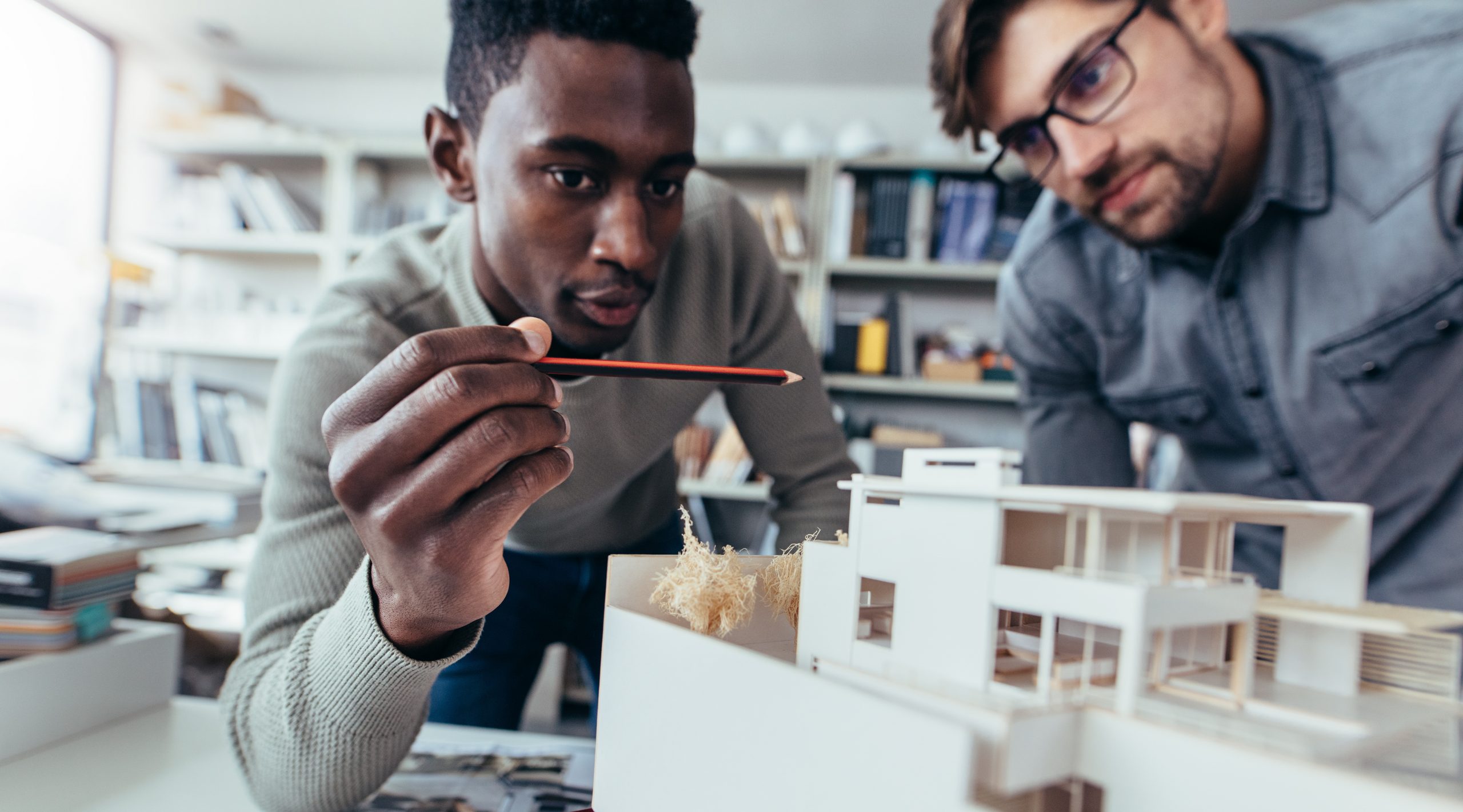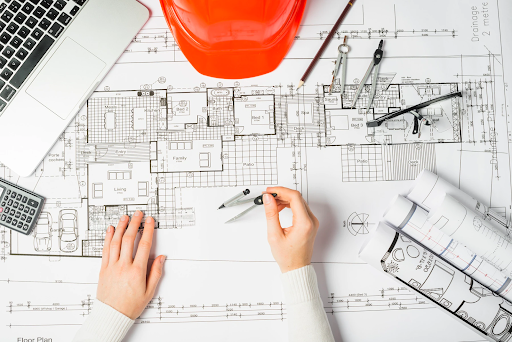Architect Rules for Designing Evergreen Interiors
Architect Rules for Designing Evergreen Interiors
Blog Article
Recognizing the Diverse Career Paths Available for Aspiring Architect
As a hopeful Architect, you have a world of job courses waiting for you. Whether you're drawn to typical design or the nuances of sustainable layout, there's a specific niche that lines up with your passions.
Typical Design: Creating Structures and buildings
Traditional architecture focuses on designing structures and frameworks that blend functionality with aesthetic allure. Your designs can mirror social heritage, showcasing regional practices while satisfying modern-day demands.
You'll develop skills in preparing, model-making, and website analysis, allowing you to envision and interact your ideas efficiently. Engaging with clients, you'll require to comprehend their vision and equate it into possible layouts.
Moreover, developing codes and sustainability techniques are necessary in your job, guaranteeing your frameworks are eco friendly and risk-free. As you grow in your occupation, you'll locate possibilities in residential, commercial, or perhaps repair tasks, each offering distinct challenges. Accepting traditional design leads the way for a meeting career that pays homage to the past while forming the future.
Urban Preparation: Shaping Neighborhoods and Public Spaces
As a hopeful Architect, you can play an important role as an urban coordinator, transforming exactly how neighborhoods interact and operate. By using neighborhood engagement methods, you'll guarantee that homeowners have a voice in forming their environment. And also, incorporating lasting style concepts will certainly assist create rooms that not just fulfill today's needs however also shield the future.
Duty of Urban Planners
While lots of might assume of engineers as the single dreamers behind structures, city coordinators play a necessary duty in shaping the more comprehensive landscape of areas and public spaces. They examine land use, zoning regulations, and area requires to create lasting atmospheres that enhance lifestyle. By collaborating with various stakeholders, you'll aid make parks, transportation systems, and suburbs that promote social interaction and ease of access. Urban coordinators likewise focus on environmental factors to consider, guaranteeing that developments incorporate green rooms and support biodiversity. Your knowledge in spatial design and neighborhood dynamics enables you to imagine future development while protecting social heritage. In this important function, you'll straight influence just how individuals experience their surroundings, making every project an opportunity for favorable adjustment.
Community Engagement Strategies
Reliable community involvement approaches are essential for city planners to guarantee that the voices of citizens are listened to and valued in the planning procedure. To promote purposeful dialogue, you must prioritize open discussion forums and workshops where community participants can share their concepts and problems. By actively including and listening comments, you'll create areas that show the area's requirements, eventually leading to even more successful and sustainable city environments.
Sustainable Layout Concepts
When making metropolitan areas, incorporating lasting layout concepts is crucial for producing atmospheres that thrive both environmentally and socially. You must begin by concentrating on power efficiency, making use of products that lower waste and promote recycling. Take into consideration integrating green spaces, like gardens and parks, to improve biodiversity and enhance air quality. Advertising walkability and public transport can lessen dependence on automobiles, cultivating a much healthier neighborhood.
Creating with water preservation in mind is also key-- consider rainfall yards and permeable surface areas to handle stormwater. Including community members throughout the planning procedure guarantees that the areas you create meet their demands and encourage social communication. By accepting these principles, you'll add to dynamic, lasting metropolitan landscapes that profit every person.

Landscape Style: Developing Lasting Outside Settings
As you discover landscape style, you'll uncover vital layout principles that produce stunning and useful outside areas. Lasting techniques play a vital duty in making certain these settings flourish while reducing ecological effect. And also, you'll locate a selection of occupation possibilities that enable you to make a real difference in how people interact with nature.
Style Principles in Landscape
Comprehending style concepts in landscape design is vital for creating sustainable outdoor environments that integrate with nature. You'll need to ponder elements like equilibrium, range, and percentage to guarantee your designs really feel cohesive and inviting. Furthermore, pay attention to seasonal modifications, developing with materials that enhance the environments year-round.
Lasting Practices Introduction
Lasting techniques in landscape style not just concentrate on aesthetics yet likewise prioritize environmental wellness and source preservation. You can design rooms that promote soil health and wellness, such as using natural products and practicing permaculture concepts. Inevitably, these techniques guarantee your designs benefit both individuals and the atmosphere for years to come.
Occupation Opportunities Exploration
With a solid structure in lasting methods, landscape style uses a selection of profession paths that enable you to make a significant effect on the environment. Urban coordinators usually work together with landscape architects to develop environment-friendly spaces in metropolitan settings, enhancing city livability. If you're enthusiastic regarding education, take into consideration ending up being a landscape architecture teacher, inspiring future generations.
Lasting Layout: Concentrating on Eco-Friendly Practices
As you discover your occupation in style, welcoming environment-friendly methods can set you apart in a competitive area. Sustainable style concentrates on creating structures that reduce environmental impact while boosting passenger health. By integrating sustainable materials, energy-efficient systems, and lasting structure strategies, you'll add to a greener future.
Start by getting expertise of environment-friendly certifications like LEED or BREEAM, which can boost your qualifications. Take into consideration exactly how natural light, ventilation, and thermal efficiency can enhance style. Work together with designers and ecological professionals to innovate services that lower waste and preserve sources.
Don't neglect the value of area involvement-- engaging neighborhood stakeholders can motivate layouts that integrate with the atmosphere. As customers progressively focus on sustainability, your expertise in environment-friendly look at this now methods will certainly not only draw in jobs however likewise fulfill your passion for liable design. Accept this vital aspect of the career, and enjoy your occupation grow.
Historical Preservation: Securing and Bring Back Social Heritage
While you begin on your architectural journey, think about the necessary visite site role of historical conservation in preserving our social heritage. This field concentrates on the defense and reconstruction of considerable buildings, sites, and frameworks that tell the stories of our past. By participating in historic conservation, you'll aid guard the building legacy that shapes neighborhood identification.
As a historical preservation Architect, you'll examine historic relevance and analyze the condition of frameworks. You'll work closely with preservationists and chroniclers to guarantee authentic reconstruction strategies are used. This occupation path enables you to blend imagination with study, allowing you to create remedies that appreciate original materials and workmanship.
Your work not just adds to sustainability by reusing existing structures however additionally fosters a feeling of pride within communities. Embracing this path will assist you come to be a guardian of history, preserving the tales and appearances that improve our lives.
Inside Design: Enhancing Indoor Spaces
Historic conservation and interior design both share a dedication to boosting the built environment, yet they concentrate on different elements. While historic conservation highlights keeping a framework's social and historic value, indoor style absolutely nos in on enhancing interior rooms for capability and aesthetics.
As an ambitious Architect, you'll find that indoor design allows you to mix imagination with technical abilities. You'll design rooms that not just look good yet likewise promote convenience and performance. This field includes recognizing just how light, color, and products interact within an area, affecting mood and use.
You'll deal with different projects, from residential homes to industrial offices, making sure that each setting fulfills the needs of its owners. By prioritizing user experience, you can transform interiors right into motivating and useful spaces, making a substantial influence on exactly how individuals interact with their environments. Welcome the opportunity to improve interior settings and shape the means people work and live.
Industrial Design: Merging Capability With Visual Appeals
Commercial layout plays a vital role in producing items that perfectly mix visual appeals with capability, guaranteeing that what you make use of daily is not only visually appealing yet likewise useful. As an aspiring Architect, you can engage yourself in this area, concentrating on designing whatever from furnishings to customer electronics. Your job involves understanding user requirements, products, and producing procedures, permitting you to create ingenious services that improve everyday experiences.
In commercial layout, you'll often team up with producers, marketers, and designers, guaranteeing that your designs are not only stunning yet additionally viable. You'll find out to balance form and feature, prioritizing functionality without sacrificing style. By sharpening your abilities in laying out, 3D modeling, and prototyping, you'll be well-appointed to bring your ideas to life. This job course provides a dynamic setting where creativity meets functionality, making it a rewarding selection for designers curious about forming the items of tomorrow.
Often Asked Questions
What Educational Qualifications Do I Required to End Up Being a Designer?
To become an architect, you'll need a professional level in design, generally a Bachelor's or Master's. In addition, you'll have to finish an internship and pass the Architect Enrollment Examination to exercise legally.
Are There Qualification Requirements for Different Architectural Job Paths?
Yes, there're certification needs for various building courses. Architect. his explanation You'll need to pass exams, complete teaching fellowships, and often go after specialized training, depending on your picked focus, like landscape design, city design, or historical conservation
What Software Skills Are Necessary for Architects Today?

Just How Can I Gain Practical Experience While Examining Design?
You can get useful experience by interning at building companies, taking part in style competitors, volunteering for neighborhood tasks, or teaming up with classmates on real-world jobs. These possibilities enhance your skills and develop important links in the market.
What Task Opportunities Exist Outside Traditional Architecture Firms?
You can discover numerous work possibilities outside standard style companies, like metropolitan planning, interior style, landscape style, construction administration, property advancement, or perhaps roles in sustainability consulting. Each offers distinct challenges and rewards.
Whether you're drawn to traditional design or the subtleties of lasting layout, there's a particular niche that aligns with your passions.When designing urban spaces, integrating sustainable layout principles is vital for developing atmospheres that thrive both environmentally and socially.As you check out landscape architecture, you'll find vital design principles that produce stunning and practical outside areas.Comprehending layout concepts in landscape style is important for creating sustainable outside settings that integrate with nature.In industrial style, you'll usually work together with marketing professionals, manufacturers, and designers, ensuring that your designs are not just stunning yet likewise practical.
Report this page